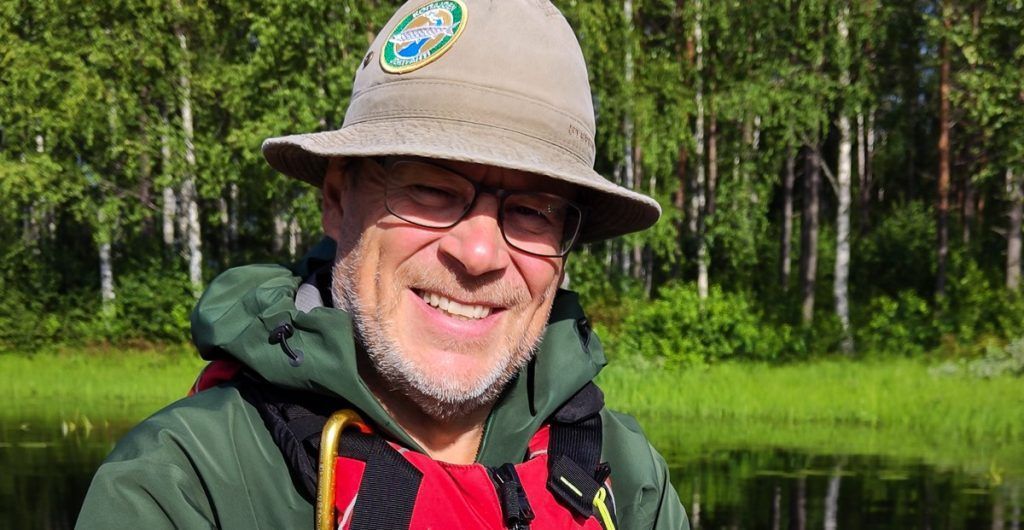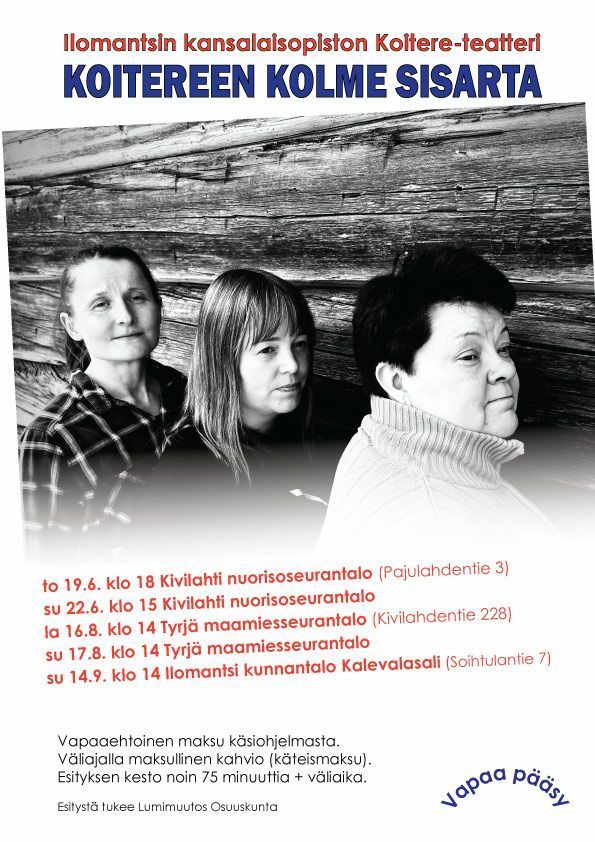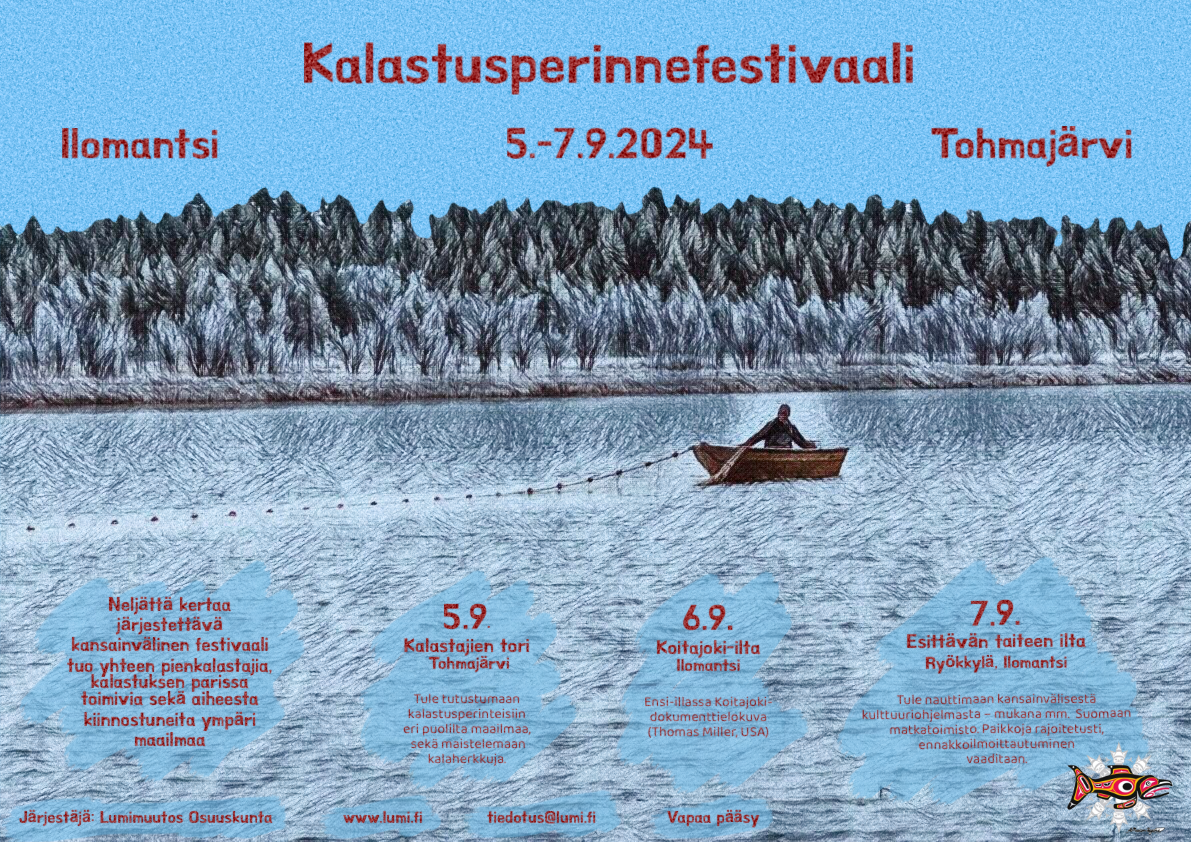Snowchange
16/12/2025
Labelled, located, logged: A system to track dams
Endangered Seascapes and Landscapes Programme features a news story from one of the River Guardians and innovation in tracking change.
In the decades following the Second World War, Finland expanded its forestry sector as part of national economic rebuilding. A major national policy involved draining peatlands to support timber production. Across the country, extensive ditch networks were cut to lower water tables and convert wetlands into forest. Although this approach became widespread, it often caused significant ecological damage and in many places did not lead to the intended establishment of forest. Haravasuo, a peatland in the Koitajoki Watershed of Eastern Finland, is one of many examples where the national push to convert peatlands into forest failed and left long lasting environmental impacts.
River Guardian Tom Toivonen, who lives near Haravasuo, has played a key role in monitoring these interventions and documenting how the landscape is responding. Through regular field visits, drone surveys, and a custom mapping system, he is helping track the progress of restoration.
https:

Snowchange
04/11/2025
Whitefish Restoration Has Proceeded in Koitajoki
Over the Autumn several whitefish spawning sites have been cleaned using the traditional river seine. Additionally mother fish support to LUKE has been provided.
Overall restoration in Koitajoki is headed to the end of the season. Karoliina has been leading efforts on the main river to restore whitefish restoration spots and capture mother fish to support the genetic stocks of the endangered whitefish with the Natural Resources Institute Finland.

Snowchange
06/07/2025
Helsingin Sanomat Newspaper has a major Report on Koitajoki
HS reports on the Koitajoki rewilding and cultural heritage work (in Finnish).
Link below.
https:

Lumimuutos
19/06/2025
Traditional Knowledge and Conservation Priorities of Eurasian Red Squirrel (Sciurus vulgaris)
A new science paper highlights the status and trends as well as previously unknown TEK of squirrel. It contains also historic hunting data from Koitajoki.
The Eurasian red squirrel (Sciurus vulgaris) has played an important role in Finnish traditional culture and livelihoods since pre-historic times. This paper analyzes the current role, status, and trends of the red squirrel using both available scientific evidence and testimonies from oral historians who were immersed in Finland's boreal hunting societies during the mid-1900s.
The convergence of observations points to the decline of this iconic mammal of northern forests and increased migration to urban habitats. Red squirrels are not currently seen as being of great relevance to conservation efforts, despite their central role in spreading seeds and in boreal predator–prey food chains.
If the animal is lost from Finland's remaining boreal timber forests, their absence may have consequences that are not yet understood. This article contains previously unavailable cultural knowledge of the Eurasian red squirrel, directly curated by knowledge holders. It presents an important nexus of different ways of knowing.
https:

Snowchange
05/06/2025
New theatre play of the community theatre of Koitere
The newest play of the community theatre of Lake Koitere, called "Three Sisters of Koitere" will take place as follows:
19.6. klo 18 Kivilahti nuorisoseurantalo (Pajulahdentie 3)
22.6. klo 15 Kivilahti nuorisoseurantalo
16.8. klo 14 Tyrjä maamiesseurantalo (Kivilahdentie 228)
17.8. klo 14 Tyrjä maamiesseurantalo
14.9. klo 14 Ilomantsi kunnantalo Kalevalasali (Soihtulantie 7)
The language of the shows is Finnish. Tickets are free of charge. The play is supported by Snowchange Cooperative.

Snowchange
02/05/2025
Restoration Season 2025 is Under Way
Restoration efforts in Koitajoki after the long winter are under way.
Main efforts have included the additional river restoration in the Kelsimä River headwaters and beginning of the Niittysuo restoration close to Lake Koitere. The next River Guardian meeting is slated for 14th May, and peatland work will continue through the whole season.
The Koitajoki.org portal has been updated over the winter with all available restored sites, also from the past.

Snowchange
12/01/2025
New Year Begins with Putkelanharju Site and The Guardian
2025 Restoration Actions in Koitajoki are proceeding. An important esker site of Putkelanharju was added in December 2024. The Guardian reported on the project just before Xmas.
Kainula, a 17 hectare ecological corridor and a part of the Putkelanharju esker complex was added in December to the Koitajoki sites. It is of vital importance as a connectivity site. In Autumn 2024 several peatland complexes were restored including Jokisuo, Valkeasuo state lands, and many more. See the map for information.
Just before Xmas the UK based newspaper Guardian featured the project in their reporting, link adjacent.
https:

Snowchange
17/09/2024
A new Koitajoki documentary film released
An American production company PrettyGoodProductions and Snowchange have finished a new documentary film about Koitajoki after three years of work. It is free to watch online.
Seining for a Song is a documentary by the American film director Thomas Miller, which deals with the history, culture and nature of Koitajoki in Eastern Finland.
The focus of the film is the country’s only river seining tradition, which renews the spawning areas of the endangered whitefish population. At the same time, the culture of the villages has changed and the restoration and rewilding efforts are under way.
The film is part of the cooperative’s extensive restoration activities in Koitajoki.
https:

Snowchange
13/09/2024
4th Festival of Northern Fishing Traditions Success
As the late-summer sun sets in the doorway of a hundred-year-old barn on the shores of Lake Mekrijärvi, Eastern Finland, Sutej Hugu sings about catching flying fish in the waters of his home island – Pongso no Tao – which lies in the Philippine Sea some 8,000km to the south east.
Listening to Hugu in a rapt semi-circle are fishing people from across the world: voyagers of star and sea from Taumako in the Solomon Islands; Inuit hunter-fishers from the Greenland ice shelf; glacial dip-netters from Alaska; Saamí from the Arctic Circle, and Finnish fishers from waters salty and fresh, east and west.
This unlikely and truly global community has gathered for the Festival of Northern Fishing Traditions – a unique fisher-to-fisher exchange which offers a space for Indigenous and small-scale fisherpeople to meet in-person, share knowledge and re-charge the stores of care and confidence needed to face up to challenges from climate change to the devastating impacts of industrial fishing.
A StoryMap summarizes the Festival results.
https:

Snowchange
21/08/2024
4th Festival of Northern Fishing Traditions in September
Snowchange is proud to announce in collaboration with the Endangered Landscapes and Seascapes Programme and other supporters the fourth Festival of Northern Fishing Traditions to be held in North Karelia, Finland from 4th September to 8th September, 2024.
The Festival, fourth of its kind, will collect fishers and associated organizations and focus on restoration of aquatic ecosystems, preservation of artisanal fisheries and renewal of fishing traditions. The Festival was originally conceptualized by fisher Olli Klemola, one of the founders of Snowchange to be a meeting place and direct exchange of artisanal and traditional fishers. This year as the Festival returns to Finland we wish to expand and inform all about the link between small-scale fishers, ecosystem restoration and rewilding and renewal and importance of artisanal fishers, especially female professionals.
Summary of the programme is below.
The programme will contain several workshops, panels, pop up events and lectures on the questions of artisanal and traditional fisheries, ecosystem restoration, traditional knowledge and field visits! Please check back in early August for travel and other precise information on the day to day specifics!
4th September delegates will arrive in North Karelia.
5th September will be an international ‘Fisher’s Market and Exchange’ in Tohmajärvi, Snowchange HQ including workshops and information booths on all international fishers, Snowchange fisheries and restoration using latest science and traditional knowledge especially from Koitajoki, a wide-ranging restoration landscape supported by the Endangered Landscapes and Seascapes Programme. The day will contain several events relevant to restoration, fisheries and waters.
6th September will be a day of field visits to see the unique river seining in the Koitajoki basin. Additionally the premiere of the Koitajoki Documentary and a public panel will take place in the evening. The documentary captures two years of work supported by Endangered Landscapes and Seascapes Programme in Koitajoki basin and is directed by Koitajoki artist in residency Thomas Miller (USA).
7th September will include visits to restoration sites in the area that support fish, water quality and have included the work of fishers. In the afternoon and evening we will proceed with Cultural Programme including a performance of Jukka Takalo and Heli-Maria Latola, Koitajoki artists in residency, international cultural programme and other events.
8th September the international delegates will return home.
http:

This website is maintained by Snowchange Cooperative, an independent non-profit that was started in late 2000 to document climate and environmental change in the North and work with local and Indigenous communities of the Northern regions. The Landscape Rewilding Programme of Snowchange advances community-based and -controlled efforts to fight climate change, enhance biodiversity and protect waterways.



Built by Nolwenture
Hosted by Bittiguru